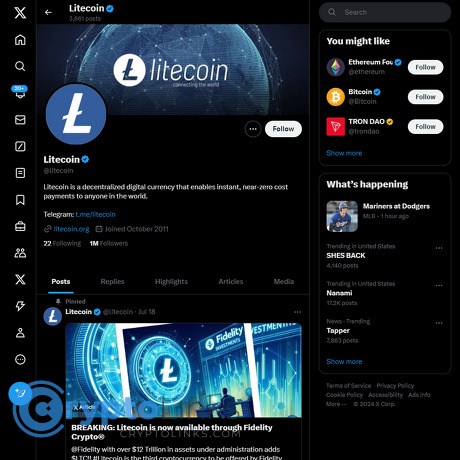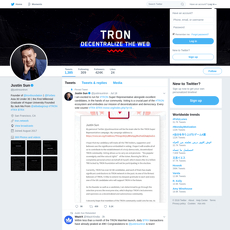Litecoin Review
Litecoin
x.com
Litecoin Review Guide: Everything You Need to Know + FAQ
Thinking about trying Litecoin or adding LTC to your stack—but not sure if it still makes sense in 2025? Wondering if it’s actually fast and cheap in real life, or if Twitter is just arguing for sport again?
Let’s cut through the noise and make this simple.
Why Litecoin can feel confusing right now
If you’ve been circling LTC, you’ve probably hit a few of these friction points:
- “Does LTC still matter vs Bitcoin and stablecoins?” One side says it’s a dependable payments rail; another says BTC Lightning and stablecoins already won.
- Mixed takes on Reddit/Twitter—some say it’s “digital silver,” others say it’s just old. It’s hard to separate signal from memes.
- Real-world costs and speed are unclear. Screenshots are great, but what do fees and confirmations look like when you actually send funds?
- Privacy questions around MWEB (MimbleWimble Extension Blocks): What does “optional privacy” mean in practice? And who supports it?
- Fear of paying dumb fees—choosing the wrong wallet or an exchange with high withdrawal costs can erase the “cheap” part fast.
- Price noise eats your time. Hype threads, rocket emojis, and “2025 to the moon” charts don’t help you decide how to actually use LTC.
“Litecoin is silver to Bitcoin’s gold.”
That old line still captures how many people use LTC today: a practical way to move value quickly and cheaply without leaving the Bitcoin-style playbook.
Here’s what you’ll get from this guide
I’m keeping it straight and useful:
- What Litecoin is actually good at—and what it’s not.
- Real-world fees and speeds you can expect when sending LTC.
- The best ways to use and store it (so you don’t burn cash on silly fees).
- Quick help on common money questions like $100 in LTC to USD, $10 USD in LTC, and what might matter for 2025.
For context, LTC’s median on-chain fee has historically hovered in the cents range even during busy periods (see data via BitInfoCharts). That’s one of the reasons people still reach for it to move funds between wallets and exchanges.
Litecoin in 30 seconds: the quick snapshot
- Bitcoin-inspired network with faster blocks (about 2.5 minutes) and predictable supply.
- Low fees and strong uptime make it a practical payments rail.
- Scrypt mining (different from Bitcoin’s SHA-256), which helps diversify mining hardware.
- SegWit support and MWEB for optional privacy on supported wallets.
- Not a hype chain—just reliable, widely supported rails that many exchanges and wallets already plug into.
If you want day-to-day updates, I keep an eye on https://x.com/litecoin for releases, integrations, and ecosystem signals.
Who this is for
- New buyers who want a clear, honest overview before they press buy.
- Existing holders who haven’t checked in on MWEB, fees, or support in a while.
- Anyone moving funds between exchanges who wants fast confirmations and predictable costs.
- Everyday users who want a cheap way to send money without wrestling with experimental tooling.
What I’ll cover next
- Where Litecoin came from and how it works (the tech, the trade-offs, and why that matters).
- Hands-on review of speed, costs, and what it feels like to actually use LTC.
- Strengths and weaknesses—no fluff.
- Price basics and quick conversions (think $100 LTC in USD and $10 USD in LTC): always check live rates on tools like the Coinbase converter.
- Security, mining, development pulse, and how healthy the community really is.
- Getting started safely: wallets, buying, sending, and avoiding gotcha fees.
Bottom line: if you want a coin that prioritizes simple, low-friction transfers and doesn’t break during hype cycles, Litecoin still earns a look. The interesting part is why that’s true more than a decade on—and where the trade-offs sit compared to Bitcoin and stablecoins.
Curious how Litecoin actually works under the hood and what makes its fees and confirmations tick? Let’s unpack the basics next—starting with the core differences from Bitcoin and how features like MWEB fit in. Ready?
Litecoin basics: what it is, where it came from, and how it works
Litecoin launched in 2011 as a Bitcoin-inspired network built for quick, low-cost transactions. Think of it as a lean payments rail: same DNA, different trade-offs. It uses Scrypt-based Proof-of-Work, targets ~2.5-minute blocks, and caps supply at 84 million LTC. Over the years, it’s quietly become a workhorse for exchanges and users who just want their transfers to settle fast without drama.
“In payments, consistency beats hype. If it settles fast and cheap every time, people come back.”
Litecoin vs. Bitcoin: the core differences that matter
Both chains are conservative by design, but they make different bets. Here’s what actually changes your experience:
- Block speed: Litecoin aims for ~2.5-minute blocks vs. Bitcoin’s ~10 minutes. In practice, 2–3 confirmations on LTC often land quicker than 1–2 confirmations on BTC. That’s useful when you’re moving funds between exchanges on a tight window.
- Fees: LTC fees are typically cents, even when other networks heat up. I’ve moved funds between exchanges for a few cents and saw confirmations within one or two blocks. You can track fee trends on resources like BitInfoCharts.
- Mining and security: Litecoin uses Scrypt instead of Bitcoin’s SHA-256. Scrypt ASICs exist today, and a big boost comes from merged mining with Dogecoin (miners can secure both networks simultaneously), which helps reinforce miner revenue and network security.
- Monetary design: Litecoin’s supply cap is 84 million LTC (4x Bitcoin’s 21 million). The schedule is similar: a predictable halving roughly every four years. Scarcity is there, just with different optics.
- Features and cadence: Litecoin tends to implement upgrades a bit earlier or with a lighter community process. It activated SegWit in 2017 before Bitcoin did and later introduced MWEB (optional privacy) in 2022. It’s not a lab coin, but it’s often where battle-tested ideas roll out sooner.
- Liquidity and profile: Bitcoin remains the institutional and macro asset. Litecoin shines as a reliable transfer rail, especially when fees or queue times elsewhere are spiking. That complementary role is why it’s still listed almost everywhere.
Trade-off to remember: faster blocks are great for UX; Bitcoin’s broader hashrate and liquidity are great for deep settlement. Pick based on the job you need done.
Supply, halving, and key features (SegWit, MWEB)
Litecoin’s economics and features are simple—and that’s the point.
- Fixed supply: Hard cap at 84,000,000 LTC.
- Halving schedule: Block reward started at 50 LTC and halves roughly every 840,000 blocks:
- 2015: 25 LTC
- 2019: 12.5 LTC
- 2023: 6.25 LTC (current)
The next cut is expected around 2027. Halvings reduce new issuance; they don’t directly raise fees—usage and blockspace demand do.
- SegWit (2017): Litecoin’s early SegWit activation reduced effective transaction size, cut fees during busy periods, and fixed malleability—opening doors for Atomic Swaps and Lightning compatibility. It was a meaningful proof point that helped the broader ecosystem move forward.
- MWEB (MimbleWimble Extension Blocks, 2022): An optional privacy upgrade that lets you send LTC with confidential amounts inside an extension block. Practically:
- You need a MWEB-capable wallet to use it; many exchanges don’t accept MWEB deposits for compliance reasons.
- It improves fungibility for users who want less traceable amounts, but it’s not a blanket privacy switch for the entire network.
- The code underwent third‑party review before launch—see the Litecoin Foundation’s post about the MWEB audit by Quarkslab.
- Fees in context: Even post-halving, typical on-chain LTC fees remain low. Miners see additional incentives through merged mining with DOGE, which helps sustain security while keeping user costs attractive.
If you’re curious about tooling, MWEB is supported by select wallets (for example, Litecoin Foundation’s Litewallet has an MWEB option). For exchange transfers, stick to the base chain unless the recipient explicitly supports MWEB.
Timeline and adoption highlights
Litecoin’s staying power looks boring at first glance—and that’s exactly why it works.
- 2011: Launches as a Scrypt-based Bitcoin variant with faster blocks and a larger supply cap.
- 2013–2016: Gains broad exchange listings and liquidity; becomes a go-to “alt” for fast transfers during bull cycles.
- 2017: Activates SegWit ahead of Bitcoin; early Atomic Swap demos appear; establishes a reputation as a stable testbed for proven ideas.
- 2020:PayPal adds LTC buy/sell for U.S. users, bringing mainstream visibility to the asset class and to LTC specifically.
- 2021–2022: Payment processors like BitPay and CoinGate support LTC; MWEB activates in 2022 after audit and community signaling.
- 2023: Third halving cuts block rewards to 6.25 LTC; LTC remains listed on most major exchanges worldwide with steady on-chain activity.
Across these cycles, Litecoin has kept long streaks of uninterrupted block production, inexpensive fees, and near-universal exchange support. When Ethereum gas spikes or Bitcoin mempools fill, traders regularly hop to LTC as a practical bridge. That habit keeps utility sticky—even as new chains show up every month promising the world.
I’ve walked through the why and how. But what does it feel like to actually hit “Send” on LTC today? In the next part, I’ll share real fees, confirmation times, and the exact steps I use when moving funds between exchanges—want to see where the seconds and cents really land?
My hands-on Litecoin review: speed, costs, and real usability
What using LTC actually feels like (fees and confirmation times)
“Money should move at the speed of trust — and cost less than a coffee tip.”
When I send Litecoin, it feels… uncomplicated. Open wallet, paste address, set amount, hit send. Broadcast is instant, and I usually see the first confirmation show up around the 2–3 minute mark. If I’m moving funds to an exchange, deposits commonly clear after a handful of confirmations — think roughly 5 to 20 minutes depending on the platform’s policy.
Fees are the part people underestimate. On normal days, Litecoin is in the “pennies or less” bucket. That’s not just my experience; fee trackers such as BitInfoCharts have shown LTC transaction fees staying consistently low compared to busier L1s. Even when networks across crypto get buzzy, LTC tends to remain cheap and predictable.
Three quick snapshots from real-world workflows I repeat constantly:
- Wallet-to-wallet P2P: I set the default dynamic fee and send. My counterpart usually sees it in their wallet almost immediately with a pending state, then a confirmation pops in a couple minutes later. For everyday amounts, the cost feels negligible.
- Exchange-to-exchange: I often convert an asset to LTC on Exchange A, withdraw on-chain, and redeposit to Exchange B. It’s a classic fee hack when BTC is pricey or ETH mainnet is clogged. The on-chain cost is tiny; the “fee” you feel is whatever the exchange charges for withdrawal — still usually lower than many alternatives.
- Time-to-usable funds: For most exchanges I use, I plan for roughly one coffee break. I’ve had deposits recognized with as few as 2–3 confirmations and others wait for more. Either way, the LTC clock spins faster than BTC’s because of the shorter block time.
A couple of pragmatic tips I live by:
- Do a tiny test send before moving size, especially to new addresses or when using MWEB-enabled wallets.
- Check the exchange’s deposit page for required confirmations so you’re not guessing.
- Keep it simple if you don’t need privacy — standard addresses are the most widely supported path in and out of exchanges today.
Strengths and weaknesses (no hype)
I don’t care for theatrics. Here’s the straight shot.
Strengths
- Low, steady fees: Even during market spikes, LTC usually stays affordable for on-chain transfers. Historical data supports this; it’s rare to see LTC fees break the “that-hurts” threshold seen on other networks.
- Fast confirmations: ~2.5-minute blocks. For payments and exchange hops, that’s a meaningful comfort upgrade vs slower chains.
- Reliability: Litecoin has been around since 2011. The network’s uptime and day-to-day stability are the boring superpower that keeps it useful.
- Wide support: Exchanges list it. Wallets support it. It’s one of those assets you can count on finding when you need to move value.
- Simple UX: UTXO-based, SegWit-enabled, no oddball approvals or smart contract surprises. For non-devs, less to break.
Weaknesses
- Overlap with Bitcoin: If BTC’s scaling (L2s, fee markets, batching) keeps improving, Litecoin’s “faster Bitcoin” pitch gets less distinct.
- Stablecoins siphoned payments: For many businesses and users, USDT/USDC on cheap rails became the default. That’s a real competitive headwind for day-to-day commerce.
- Wealth concentration concerns: Analyses from research shops (e.g., CryptoEQ) have flagged holder concentration as a risk factor. It doesn’t break usability, but it matters for market dynamics and perceived decentralization.
- Branding and attention cycles: LTC isn’t flashy. It can be overlooked during hype rotations, which sometimes delays integrations or community momentum compared to shinier narratives.
- MWEB friction: Optional privacy via MWEB is great for some users, but not every exchange or wallet supports MWEB flows. Expect standard-address pathways to remain your main bridge to centralized venues.
Where LTC fits: payments rail, exchange hopper, or long-term hold?
Here’s how I actually use Litecoin and when I suggest it to friends and readers.
As a payments rail
Pick LTC when you want cheap, fast final settlement without guessing whether gas will be $0.05 or $15 in 20 minutes. Cross-border friends-and-family transfers are a sweet spot if both sides know how to handle a basic wallet. If you need privacy, MWEB between supported wallets adds a layer — just remember most exchanges won’t accept MWEB addresses, so think of MWEB as P2P-only.
As an exchange hopper
This is the killer use case. If you’re chasing a listing on Exchange B but your funds sit on Exchange A, converting to LTC, withdrawing on-chain, and redepositing often beats BTC and ETH fees during busy hours. The result: fewer fee surprises and faster capital rotation. I’ve routinely cut transfer costs from “noticeable” to “who cares” doing this, especially when ETH mainnet is peaky.
As a long-term hold
Some treat LTC as a simple, battle-tested asset with a predictable supply schedule and periodic halvings. It doesn’t chase every new narrative, which some people like for a “payments-first, nothing wild” allocation. Others argue the opportunity cost vs BTC is too high. Both views are fair — your decision likely hinges on whether you want a low-friction transfer rail you also don’t mind holding.
Practical checklist I use before hitting send:
- Confirmations needed: Check the receiver’s rules so your timing expectations are right.
- Fee sanity check: Glance at a fee chart or your wallet’s estimated fee. LTC should look like pocket change — if it doesn’t, something else is going on.
- Test transaction: Send a tiny amount first, especially when moving to fresh addresses or crossing wallets with different feature sets (e.g., MWEB support).
- Use a reputable explorer: If something seems off, paste the TXID into a public explorer like Blockchair’s Litecoin explorer to see confirmations and status.
Bottom line on usability: Litecoin still nails what most people actually need — low-fee, fast settlement on a chain that just works. Which raises the question everyone asks next… how does that practicality translate into price, and what does $100 LTC look like in USD today — or in 2025? I’ll pull back the curtain on live conversions, the catalysts I’m watching, and the realistic scenarios in the next section.
Price, conversions, and 2025 outlook (with simple examples)
Quick conversions: $100 LTC in USD and $10 USD in LTC
Prices change by the minute, so always check a live converter before you move money. I like the Coinbase converter and CoinGecko’s LTC/USD page because they’re fast and clean.
Here’s the simple approach I use when I’m about to buy, send, or hedge:
- Open a live LTC/USD chart or converter.
- Note the current LTC price (say it’s $75 or $95 — just examples).
- Do the math:
- 100 LTC x $75 = $7,500 (if LTC = $75)
- 100 LTC x $95 = $9,500 (if LTC = $95)
- $10 / $75 ≈ 0.1333 LTC
- $10 / $95 ≈ 0.1053 LTC
Two quick tips from hard-earned experience:
- Check the spread and fees: Some exchanges quote a “pretty” price but take their cut inside the rate. Compare 2–3 places if you’re moving size.
- Mind withdrawal fees: Many exchanges charge a flat LTC withdrawal fee. If you’re moving tiny amounts, that flat fee can bite. If you’re moving larger amounts, that fee becomes negligible versus on-chain alternatives.
“In crypto, liquidity is the oxygen; without it, even great tech can’t breathe.”
Not financial advice. Always verify the live rate the moment you trade.
What could move LTC’s price next
LTC rarely moves in a vacuum. It responds to flows, narratives, and Bitcoin’s gravity. Here’s what I’m watching:
- Bitcoin’s cycle and correlation: Historically, LTC has shown a high positive correlation with BTC. Coin Metrics’ rolling correlations often sit north of 0.7 over long windows (source: Coin Metrics). If BTC rips on ETF inflows or macro easing, LTC usually catches a bid.
- Network usage and fees: Real activity matters. Daily transactions, active addresses, and cost per transfer shape demand. LTC saw spikes during 2023’s inscription experiments, proving it still gets used when other chains are pricey (see historical stats on BitInfoCharts).
- Miner economics and halving aftermath: Litecoin’s most recent halving (Aug 2023) cut block rewards to 6.25 LTC. Lower issuance can be bullish long term, but short-term miner selling and hashrate shifts add noise. Keep an eye on Scrypt hashrate trends and miner profitability (CoinWarz, MiningPoolStats).
- Exchange and fintech integrations: Listings and easy fiat ramps matter. Platforms like PayPal/Venmo and Robinhood supporting LTC expanded casual access. Any new on-ramps, cross-border payment pilots, or remittance partners can nudge demand.
- Privacy narratives around MWEB: MWEB is optional, but it adds a privacy angle that can attract or repel liquidity depending on the jurisdiction. If major exchanges keep normal deposits/withdrawals flowing while supporting standard LTC, price impact stays neutral; if policies tighten, it can weigh on sentiment.
- Macro liquidity and stablecoin flows: Risk assets breathe easier when USD liquidity expands. Stablecoin market cap growth has been a decent proxy for crypto-wide buying power (Glassnode/Kaiko research). Rising stablecoin supply often accompanies stronger altcoin bids.
- “Utility rallies” during fee shocks elsewhere: When Ethereum or Bitcoin fees spike, traders hop to LTC for fast, cheap exchange transfers. That utilitarian demand doesn’t always moon price, but it can support it during turbulence.
2025 projections: what sources say and how to read them
Yes, everyone wants a number. Public forecasts from outlets like Changelly’s blog and other prediction roundups usually place 2025 in a wide range, often in the triple digits for the “base” or “optimistic” cases. Treat those as sentiment thermometers, not gospel.
How I frame it:
- Bear case: BTC dominance rises, alt rotations stay shallow, and regulators stay grumpy on privacy features. LTC trades as a utility rail with limited multiple expansion. Range-bound action with spikes on liquidity events.
- Base case: BTC continues a healthy cycle, liquidity improves, and LTC maintains strong exchange support and low-fee utility. Price tracks BTC beta with occasional outperformance when users need fast transfers.
- Bull case: Risk-on returns in force, stablecoin supply grows, and a payments or remittance narrative lands with a big partner. LTC benefits from new integrations and a renewed “cheap, reliable rail” story, pushing above conservative targets.
What actually guides my read isn’t a crystal ball; it’s data and behavior:
- LTC/BTC ratio: This tells you if LTC is outperforming or lagging the king. Historically, the ratio trends down over long arcs but mean-reverts in bursts—useful for timing, not blind faith (check a TradingView LTCBTC chart).
- On-chain health: Consistent transactions, rising active addresses, and stable or increasing hashrate are positive. Watch explorers and analytics hubs for trend shifts (BitInfoCharts, Coin Metrics, Messari profiles).
- Liquidity signals: Exchange depth, spreads, and derivatives open interest. When order books thicken, volatility can compress until the next catalyst.
- Narratives with teeth: Integrations that reduce real-world friction beat hype every time. If moving money with LTC keeps getting easier and cheaper, that’s the kind of story markets reward over quarters, not hours.
Want a simple playbook for 2025?
- Use alerts on LTCUSD and LTCBTC for your key levels (TradingView works well).
- Double-check the live conversion before you hit buy/sell to avoid bad fills.
- Never ignore fees—net results matter more than headline prices.
If price is the “what,” the next question is the “why.” How secure is the network that backs your LTC, who’s shipping the code, and what’s the real state of the community? Ready to look under the hood?
Security, development, and community health check
Network security and mining landscape
Litecoin runs on proof-of-work with Scrypt ASICs. That one choice matters: it gives LTC an industrial-strength security model that’s separate from Bitcoin’s SHA-256 and far beyond what consumer GPUs can swing. Add in the fact that Scrypt miners often merge-mine Dogecoin (AuxPoW), and you get a stronger economic backbone—miners are incentivized to stay online because they’re earning across two networks at once. That’s good for uptime and hashrate stability.
What I watch (and you can, too):
- Hashrate and difficulty trend: Steady or rising is good; sharp drops can flag miner capitulation. Check live charts on explorers like litecoinspace.org.
- Pool concentration: A healthy network avoids one pool creeping too high. I keep an eye on miningpoolstats.stream/litecoin to make sure no single pool controls the narrative.
- Rentable hashrate: 51% attacks are harder when marketplaces like NiceHash can’t supply anywhere close to the network’s total power at a sane price. Take a quick look at the Scrypt marketplace capacity on NiceHash when you want extra peace of mind.
- Node heartbeat: Thousands of reachable nodes across different ISPs and regions point to resilience. You can spot-check on litecoinspace.org/nodes.
On confirmations: for everyday payments, many services are comfortable with 2–6 confirmations on Litecoin (roughly 5–15 minutes). That’s not a random superstition—classic research shows the probability of a successful double-spend attack falls off exponentially with each confirmation. If you’re curious about the math, start with Meni Rosenfeld’s analysis of hashrate-based double spends (arXiv:1207.2143).
Real-world example I see weekly: OTC desks and exchanges frequently use LTC as a low-friction rail for client settlements. They set a fixed confirmation policy (say, 4 blocks), and funds are considered final in under 10 minutes—without paying premium fees. That predictability is why Litecoin keeps showing up in places you wouldn’t expect.
“Trust, but verify—the chain gives you the truth if you know where to look.”
Development pulse: Foundation, client updates, and MWEB status
Litecoin development is steady and pragmatic. The node software is closely aligned with Bitcoin Core’s battle-tested codebase, and critical fixes are regularly backported. That conservative approach won’t win any hype cycles, but it’s exactly what you want for a payments chain: fewer surprises, smooth upgrades, and clear security priorities.
Who moves the ball:
- Litecoin Core maintainers: Ship protocol and security updates, track upstream improvements, and keep networking and mempool logic robust. Code lives at github.com/litecoin-project/litecoin.
- Litecoin Foundation: Education, ecosystem coordination, grants, and wallet support. Start here if you want the broader picture: litecoin.net and litecoin-foundation.org.
On MWEB (Mimblewimble Extension Blocks): it’s live, opt-in, and designed to improve fungibility and privacy by hiding amounts and addresses inside an extension block. Peg-in/peg-out transactions bridge the transparent main chain and the MWEB space. A few important realities from daily use:
- It’s optional: You can keep using standard Litecoin addresses; nothing forces MWEB.
- Wallet support varies: Desktop Litecoin Core supports MWEB. Mobile support is still catching up, so plan your tooling if you need private flows.
- Compliance optics: Not every exchange supports deposits/withdrawals to MWEB. Standard LTC addresses remain universally supported and are what most platforms expect.
Expect roadmap velocity to stay measured. Litecoin tends to prioritize reliability and backports over flashy experiments. If you want the “move fast and break things” vibe, other chains exist. If you want a chain to move money next week and next year without drama, this culture is a feature.
Social and news pulse: follow the signal, mute the noise
Crypto news cycles can spin you around. I keep a tight list so I’m never guessing:
- Official updates: x.com/litecoin for network headlines, adoption notes, and release pointers.
- Code and releases: Watch commits, tags, and issues on GitHub to see what’s real, not rumored.
- Network data: Explorers such as litecoinspace.org for fees, hashrate, and mempool; broader analytics from Messari and Coin Metrics when you want context.
- Mining distribution: Keep an eye on pool share on MiningPoolStats and glance at Scrypt market capacity on NiceHash.
If you’ve been burned by “announcements of announcements,” this setup is the antidote. Track the chain, track the code, and let everyone else argue on Reddit. Litecoin has survived multiple cycles because its base layer keeps working even when the spotlight moves on.
Ready to put this into practice? In the next section I’ll show the exact wallets I trust, which ones support MWEB today, and a simple trick to avoid surprise exchange withdrawal fees—want the short list I actually use?
Getting started: wallets, buying, storing, and staying safe
Pick a wallet that fits your style
I’ve tested just about every Litecoin wallet that matters. Here’s the quick, honest breakdown so you don’t waste time or compromise your security.
Hardware (maximum safety, best for saving)
Ledger and Trezor both support LTC securely and work well for long-term storage. Expect rock-solid key security and easy backups (12/24-word seed, optional passphrase).
Note: most hardware wallets do not support Litecoin’s MWEB yet. If you want MWEB privacy, see the desktop option below.
Desktop (control and features)
Litecoin Core (v0.21+) is the official full node and does support MWEB. It’s heavier (you download the chain), but you get privacy features, strong validation, and a mature codebase. If you care about optional privacy on Litecoin, this is the most straightforward path today.
Electrum-LTC is a lightweight alternative many power users like for multi-sig, coin control, and watch-only setups. It’s fast to set up. Current reality: MWEB support is still limited outside of Litecoin Core.
Mobile (convenience for everyday spending)
Mainstream mobile wallets support LTC well for basic sending/receiving, QR scanning, and fee control. But again, most don’t support MWEB yet. If your goal is quick payments and you don’t need MWEB, mobile is fine. For MWEB, stick to Litecoin Core on desktop.
Address formats to know: legacy (L…), P2SH (M…), and native SegWit (ltc1…). For lower fees and best compatibility, use ltc1… when possible. If you’re using MWEB, your wallet will present a special MWEB address type—only send there if the receiver and the sender both explicitly support it.
Backups and recovery basics (don’t skip):
- Write your 12/24-word seed on paper or metal. Store offline in two locations.
- Consider a passphrase (25th word) for added security—just never forget it.
- Test a small recovery on a spare device before you deposit serious funds.
- For larger holdings, use multisig (e.g., 2-of-3) with keys stored in different places.
Tip: If you plan to use MWEB for privacy, keep a separate wallet or account structure for MWEB funds vs regular LTC. Don’t constantly shuttle between them—that leaks metadata and defeats the purpose.
Buy and send LTC without paying dumb fees
Here’s the playbook I use to keep costs low and transfers smooth.
1) Pick the right on-ramp
- Bank transfer to major exchanges usually has the lowest purchase fees. Cards are faster but pricier.
- Check the exchange’s withdrawal fee for LTC before you buy—this is what often stings people. For example, big exchanges sometimes charge a fixed LTC withdrawal fee that’s tiny compared to USD-stablecoin withdrawals on congested networks. Verify on their official fee page before funding.
- Examples of fee pages to bookmark:
- Binance withdrawal fees
- Kraken fees
- Coinbase fee and withdrawal help center
2) Use the right network
- Send LTC on the native Litecoin network, not a wrapped token on another chain. Cross-chain “pegs” and bridges add counterparty risk.
- Only use MWEB if both sides support it. Many exchanges don’t accept MWEB deposits yet. If an exchange lists “Litecoin (LTC)” but doesn’t mention MWEB, assume standard LTC addresses only.
3) Keep miner fees tiny
- Litecoin’s on-chain fees are historically very low (often cents or less). You can verify current averages on BitInfoCharts (LTC fees).
- Use ltc1… addresses for typically smaller fees and better efficiency.
- If you’re paying multiple people, batch them into one transaction (one input, multiple outputs) to save even more.
4) Avoid withdrawal “gotchas”
- Do a test send first—e.g., 0.01 LTC—before moving the full amount.
- If you’re transferring between accounts on the same exchange, check whether an internal transfer is free. That can save you the network hop entirely.
- Always confirm the first and last characters of the address after pasting, and compare with the QR on a second screen if possible.
5) Real-world fee check-ins I see often
- On-chain LTC send: typically a few cents or less (varies with inputs and wallet settings).
- Exchange withdrawal: often a small flat LTC amount—sometimes under a dime in USD equivalent when LTC price is average. This can be dramatically cheaper than USD-stablecoin withdrawals on congested chains.
These are patterns, not promises—always check the live fee before you commit.
Compliance and safety tips that actually help
I’m not your lawyer or accountant, but I’ve seen the same mistakes too many times. Here’s what actually protects you.
KYC and records
Expect identity checks on reputable on-ramps. Keep a simple log: date, asset, amount, USD value at trade time, tx hash, fee paid, and purpose. This saves headaches later.
Taxes
In many countries, selling or swapping LTC is taxable. In the U.S., see IRS guidance on virtual currency and Form 8949 for gains/losses reporting. Tools like Koinly or CoinTracking help match lots and track cost basis. Keep all exchange CSVs.
Phishing and impostors
Your seed phrase is never entered into a website. Don’t approve random “wallet connect” prompts. Bookmark your exchange URLs. Consider a hardware security key (U2F) for logins, not SMS.
Address poisoning and dust
Scammers sometimes send tiny amounts to “poison” your address list hoping you’ll copy-paste the wrong one later. Use a saved address book in your wallet and verify on every send.
SIM swap defense
Remove phone numbers from exchange accounts when possible. Use TOTP or a hardware key. Set a carrier PIN.
MWEB friction
Not all services accept MWEB deposits. If you receive via MWEB but later need to send to an exchange that doesn’t support it, plan to move funds to a regular LTC address first (your wallet can guide you). Keep privacy funds and regular funds separated to avoid confusion.
Quick sanity check before any large send:
1) Is the address format supported by the receiver?
2) Did I test with a small amount first?
3) Are fees acceptable right now (check your wallet’s estimate)?
4) Is my device secure (no malware, no sketchy extensions)?
Extra reading and tools
- Litecoin.org – official site and downloads.
- Litecoin Core releases – verify signatures and changelogs.
- BitInfoCharts (LTC) – fees, hashrate, and network stats.
- Blockchair (Litecoin explorer) – transactions, addresses, and blocks.
- Litecoin on X – official updates and community pulse.
You’re set up to use LTC the smart way—without the fee traps and rookie mistakes. Still wondering about the quick conversions everyone asks about (like “How much is 100 LTC in USD?”) and what might move the price next? I’ve got straight answers coming up in the FAQ—want the fastest way to check your number today?
Litecoin FAQ: quick answers you came for
How much is 100 LTC in USD?
Short answer: it changes every minute. Always use a live converter before you act.
- Fast check: Coinbase LTC/USD converter
- Price reference: CoinGecko: Litecoin
If the market price shows LTC = $70, then:
- 100 LTC ≈ $7,000 (100 × $70)
- $10 USD ≈ 0.142857 LTC ($10 ÷ $70)
Two quick things that move your “real” outcome:
- Spread and fees: exchanges add a spread and charge trading/withdrawal fees. Expect your final number to be a little worse than the headline price.
- Slippage: if you market-buy or sell a large amount relative to order-book depth, you can move the price. Use limit orders for control.
Pro tip: If you’re moving funds between exchanges, check which chain has the lowest withdrawal fee right now. LTC is usually pennies to a few cents on-chain, but some platforms mark up withdrawal fees—always preview before you click.
What is wrong with Litecoin?
“Wrong” is strong, but there are fair critiques you should know about:
- Overlap with Bitcoin’s role: When BTC fees are low or exchanges support cheap BTC transfers, LTC’s edge narrows. If Bitcoin L2s become truly seamless for everyday users, LTC competes for the same “cheap rail” mindshare.
- Stablecoins stole the payments show: For day-to-day commerce, many merchants and platforms prefer USD-pegged stablecoins to avoid volatility. That caps how much “pay at checkout” flow LTC captures.
- Wealth concentration optics: On-chain “rich lists” often show a large share of LTC in top addresses (common across many coins). Some of those wallets belong to exchanges, which skews perception, but concentration still raises decentralization debates. If you want to inspect it yourself, here’s a public lens: Litecoin rich list.
- Privacy trade-offs with MWEB: MWEB adds optional confidentiality, but most big exchanges keep deposits/withdrawals on standard transparent addresses due to compliance rules. Translation: you likely won’t use MWEB when moving LTC through centralized venues.
- Not a hype magnet: Litecoin doesn’t ride the same trend waves as DeFi, NFTs, or high-throughput smart-contract chains. That can mean fewer catalysts in attention-driven markets.
None of these are fatal flaws. They just set expectations: think of LTC as a sturdy payments rail, not a kitchen-sink ecosystem.
Final take: should you care about Litecoin?
If you want fast, cheap, widely supported transfers on a battle-tested network, yes—keep LTC in your toolkit. It’s fantastic for moving value between exchanges without sweating fees or mempool drama, and it’s simple enough that you won’t wrestle with complex UX.
If your plan is DeFi, NFTs, or bleeding-edge smart contracts, look elsewhere. If you’re all-in on BTC and happy with your rails, you may not need it. But as a dependable, low-friction option that “just works,” Litecoin still earns its spot.
Want to stay current without noise? I keep an eye on the official feed at @litecoin and verify anything market-related with neutral data tools like CoinGecko and block explorers such as Blockchair (Litecoin). Quick checks, fewer surprises—that’s the game.
CryptoLinks.com does not endorse, promote, or associate with Twitter accounts that offer or imply unrealistic returns through potentially unethical practices. Our mission remains to guide the community toward safe, informed, and ethical participation in the cryptocurrency space. We urge our readers and the wider crypto community to remain vigilant, to conduct thorough research, and to always consider the broader implications of their investment choices.













